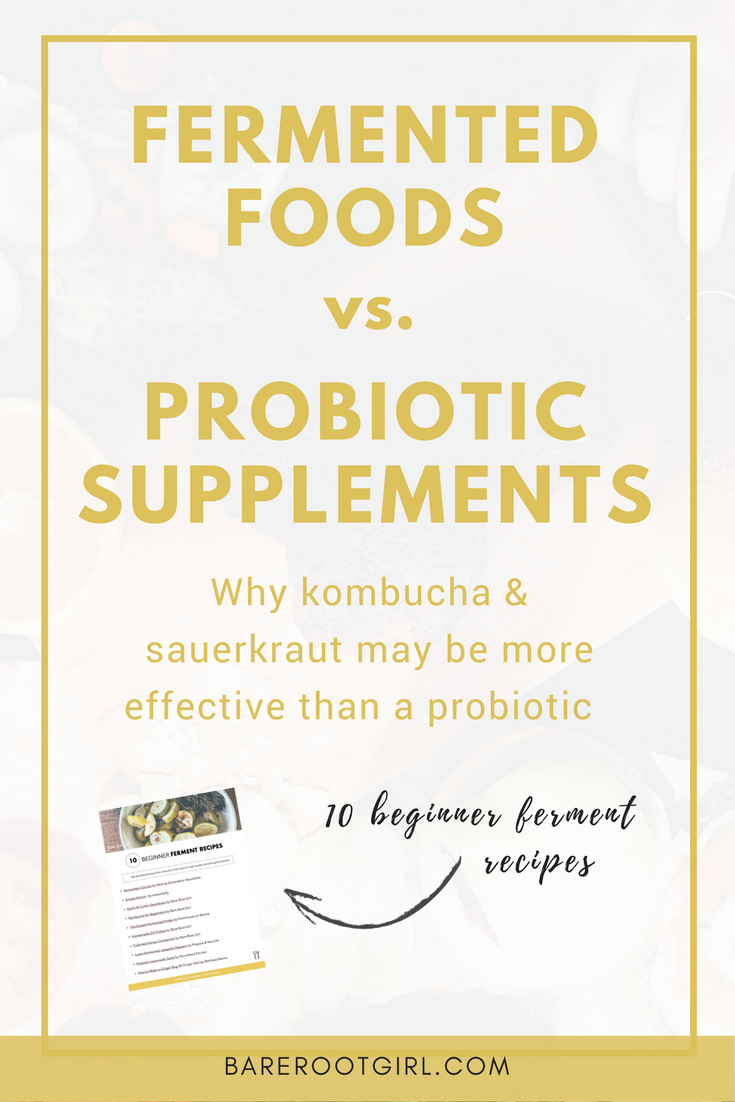
The word “probiotics” is a major buzz word these days. Why is that?
My thought is that because so many people suffer from gut disorders, to the point that it effects their daily lives, that they’re vulnerable to accept whatever solutions are put in front of them. Hence the heavily marketed word “probiotics.” Whether you deal with candida, leaky gut, IBS, Crohns, acid reflux, ulcers, or something else, my guess is you’ve tried adding or increasing your probiotics. And likely it hasn’t been 100% curative or even effective at all in helping your symptoms. This is because it matters what probiotic you choose, and whether or not it comes from a laboratory, and if so, which laboratory it comes from. That’s a lot of factors and a lot to sift through for the everyday gut sufferer, like you and me.
I can say from firsthand experience that the effects of gut disorders it can be quite life-altering. You go from not noticing the digestive process to dreading eating (or in many cases, not eating) for fear of feeling the entire length of the process. It’s not only a lot of discomfort but it can be painful, as well. The root of most gut disorders varies in nature, many of which we have limited knowledge of when it comes to explanation, cause, or cure. But the symptoms of each are very similar.
Having dealt with more of the above listed conditions than not, I can attest to trying many different solutions to ease the symptoms. I spent money on various over the counter probiotic capsules or so-called quick cures. As awesomely diverse a selection as can be found a most health food stores these days, the quality is unfortunately inconsistent from product to product. I’d finally upgraded to professional line probiotics a couple of years ago and found some measure of relief there. But the most consistent relief I’ve found has come from adding fermented foods to my diet.
Fermented foods are not only a more effective but also a more affordable way to get probiotics.
I started with kombucha (store-bought, though I now make my own) and then moved to homemade lacto-fermented veggies. Primarily, sauerkraut; although I’ll lacto-ferment about any veggie! As you can read about in my recent Sauerkraut Recipe, home fermentation can yield a drastically different taste than the cultured products you can buy at the store. Truth be told, most store-bought sauerkraut is simply packed in vinegar for preservation and not truly cultured at all (check the refrigerated section & read your labels!). Meaning: there is no live, active, beneficial bacteria present! So making your own not only creates a tastier product (no vinegar) but a TON of active cultures that will improve your symptoms.
It's free!
GET YOUR COPY
Enter your email to get a FREE printable PDF of 10 Beginner Ferment Recipes! You'll also get my weekly letters designed to help you successfully & sustainably transition to a Paleo-style diet.
10 free Beginner Ferment Recipes
A brief synopsis of the lacto-fermentation process: technically named “lactic acid fermentation,” it’s the process whereby glucose, frustose, and sucrose present in foods are converted into lactic acid. Never heard of lactic acid? Well, it’s the family of bacteria that contains common probiotic strains like lactobacillus and acidophillus.
The lacto-fermentation process creates beneficial bacteria while also breaking down sugars, making fermented foods great for those with gut issues that can benefit from low-sugar foods (Candida, leaky gut). The powerfully diverse naturally occurring bacteria improves good gut flora and helps fight off the bad stuff. Often more efficiently than a probiotic capsule.
If new to fermented foods, start slow! Traditionally prepared fermented foods contain live, active bacteria and often with a much greater presence than low-grade over the counter probiotics. They can make you bloated or give you headaches if consumed in large amounts. Start with one fermented food item and see how you do it with. Gradually increase the quantity and then add in other forms. I highly recommend starting with homemade sauerkraut, as it’s easy to incorporate into your everyday diet (since it’s delicious on everything!). This recipe is my very favorite sauerkraut and it’s great for beginners.
Have you tried making your own fermented foods? What’s your favorite?
Get a free list of 10 Beginner Ferment Recipes by clicking below!
It's free!
GET YOUR COPY
Enter your email to get a FREE printable PDF of 10 Beginner Ferment Recipes! You'll also get my weekly letters designed to help you successfully & sustainably transition to a Paleo-style diet.
10 free Beginner Ferment Recipes






